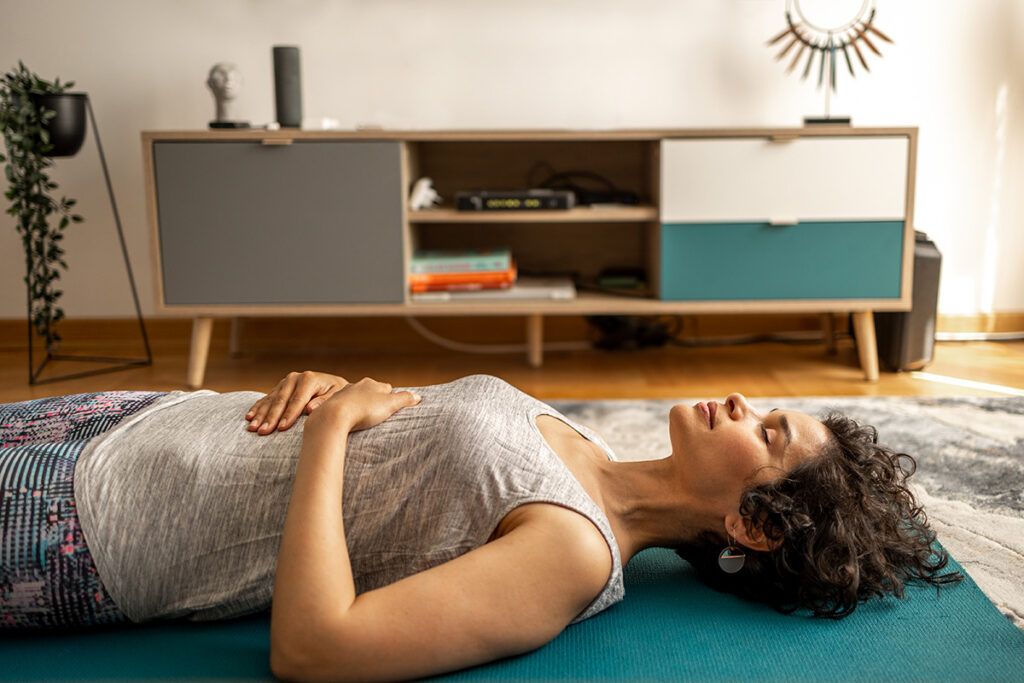Breathing techniques or breathing exercises refer to a specific breathing pattern designed to achieve certain therapeutic benefits.
You can use various breathing techniques to improve your breathing and manage chronic obstructive pulmonary disease (COPD) symptoms. These techniques include pursed-lip breathing, diaphragmatic breathing, and paced breathing.
Knowing more about various breathing techniques and treatment options can help you manage your condition in a way that works for you.
How do breathing techniques help?

Breathing techniques can help you in various ways when managing COPD, including:
- Reducing shortness of breath: Breathing techniques such as pursed-lip and diaphragmatic breathing promote slower, controlled breaths. These techniques can help relieve breathlessness, a common symptom of COPD.
- Improving lung function: Using specific breathing techniques can improve how air flows in and out of your lungs and lowers the number of breaths you need to take. This improves overall lung function and makes breathing more efficient.
- Enhancing the quality of life: Breathing techniques can boost your energy levels and improve exercise capacity. They also enable you to engage in activities you may have previously avoided due to breathlessness. By lowering the effect of COPD symptoms, these techniques can help improve overall well-being and quality of life.
- Promoting relaxation: COPD can be physically and emotionally demanding, leading to increased stress and anxiety. By consciously controlling your breath, you can induce a relaxation response, calm the mind, and lower stress levels.
- Controlling your breathing during physical activities: COPD can make physical activities challenging due to breathlessness. Learning breathing techniques allows you to manage your breath during exercise, making activities more manageable and less strenuous.
What are the different techniques?
There are different COPD breathing techniques, including:
Pursed-lip breathing
Pursed-lip breathing is a technique that may help regulate your breathing pattern and reduce shortness of breath.
Here’s how to practice pursed-lip breathing:
- Sit in a comfortable position that allows you to breathe easily.
- Relax your neck and shoulders.
- Breathe in slowly through your nose for a count of two.
- Purse your lips as if you’ll whistle or blow out a candle.
- Breathe out slowly through pursed lips for a count of four.
- Repeat this cycle for several breaths.
Diaphragmatic breathing
Diaphragmatic or abdominal breathing engages the diaphragm muscle, allowing for deeper breaths and improved lung capacity.
Here’s how to practice diaphragmatic breathing:
- Sit or lie in a comfortable position that allows you to relax and breathe easily.
- Gently place one hand on your abdomen, just below your rib cage.
- Breathe slowly through your nose, allowing your abdomen to rise while keeping your chest relatively still.
- Exhale slowly through pursed lips, letting your abdomen fall.
- Continue this pattern, ensuring your abdomen rises and falls more than the chest.
Paced breathing
Paced breathing involves consciously regulating the rate and depth of your breaths. It can help you maintain control during physical activities or moments of breathlessness.
Here’s how to practice paced breathing:
- Sit or stand in a relaxed position that allows for easy breathing.
- Let your muscles relax, particularly in your shoulders, chest, and abdomen.
- Breathe in slowly and deeply through your nose for a specific count, such as 2 or 3 seconds. Focus on filling your lungs with air, but avoid overfilling or straining.
- Hold your breath for a brief moment.
- Breathe out slowly and evenly through pursed lips. Make the exhalation more prolonged than the inhalation, allowing for a complete breath out.
- Repeat this pattern, gradually adjusting the count to match your comfort level.
Inspiratory muscle training (IMT)
IMT is a breathing technique that involves a breathing device called an inspiratory muscle trainer. It helps strengthen the respiratory muscles in people with COPD.
This breathing technique may form part of a pulmonary rehabilitation program under the guidance of a doctor or respiratory therapist.
Here’s how to practice IMT:
- Sit or stand in a comfortable position.
- Hold the IMT device with both hands, ensuring a secure grip. Position the mouthpiece or mask securely in your mouth or over your nose, depending on the type of device used.
- Take a slow, deep breath in through the device.
- Hold your breath for a few seconds after fully inhaling.
- Breathe out at a comfortable pace, allowing the air to flow out naturally without any resistance.
- Take a short rest period before performing the next repetition.
Consider consulting a doctor or a respiratory therapist to ensure you use these techniques correctly and determine the most suitable for your needs.
Other treatments
Other treatments include:
Medications
A doctor may prescribe medications to manage COPD symptoms and improve lung function. These may include:
- bronchodilators to relax and open the airways, such as albuterol or arformoterol (Brovana)
- corticosteroids to lower airway inflammation, such as fluticasone (Xhance)
- combination medicines like Symbicort, which is a combination of budesonide (a steroid) and formoterol (a bronchodilator)
- antibiotics to treat bacterial respiratory infections
If you need help covering the cost of medications, the free Optum Perks Discount Card could help you save up to 80% on prescription drugs. Follow the links on drug names for savings on that medication, or search for a specific drug here.
